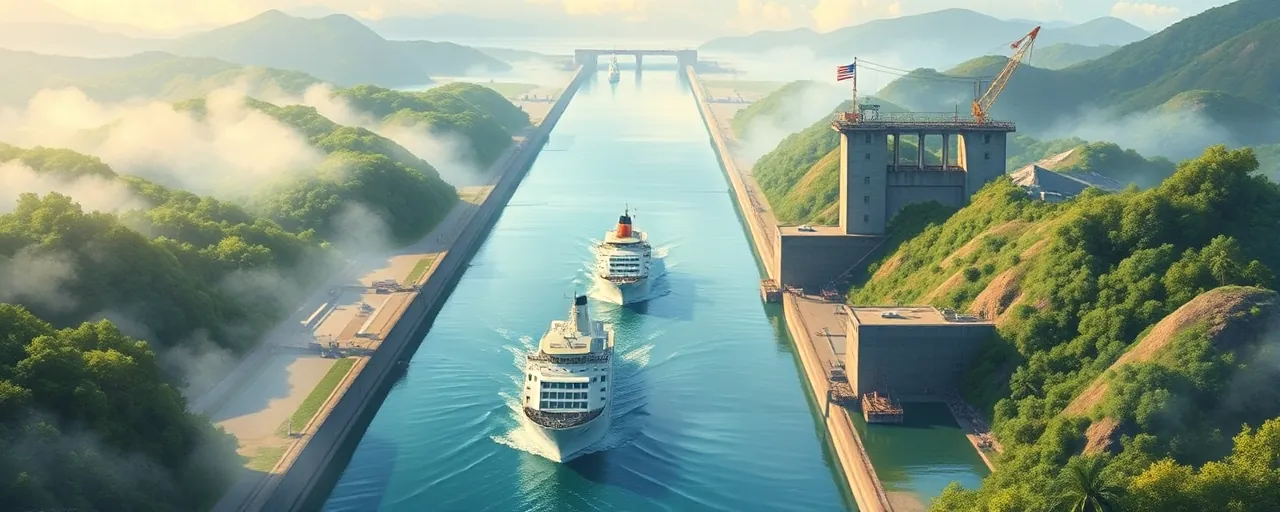A Partnership in Focus
The United States and Panama are doubling down on their alliance, tackling thorny issues like illegal migration and foreign influence near the Panama Canal. On April 4, 2025, Deputy Secretary of State Christopher Landau held a call with Panamanian Foreign Minister Javier Martínez-Acha, spotlighting a relationship that’s weathered history’s storms and now faces fresh challenges. From dense jungles to bustling ports, the stakes are high for both nations, and their latest talks signal a renewed push to keep shared goals on track.
This isn’t just diplomatic small talk. The Panama Canal, a linchpin of global trade, and the Darién Gap, a notorious migration bottleneck, are more than geographic footnotes; they’re real-world pressure points affecting everyday lives. For Panama, it’s about sovereignty and economic survival. For the U.S., it’s a matter of border security and regional clout. The conversation between Landau and Martínez-Acha reflects a gritty determination to turn rhetoric into results, even as global powers jostle for influence.
Cracking Down on the Darién Gap
One standout achievement dominates the discussion: a dramatic drop in illegal migration through the Darién Gap. Official figures show a plunge from thousands crossing monthly to just 408 in February 2025, a near 99 percent decline. Panama’s decision to shut down jungle trails, paired with beefed-up patrols and U.S.-backed biometric screening, has choked off a route once teeming with desperate travelers. It’s a win for both nations, who’ve long grappled with the human toll of this treacherous stretch, where gangs, wildlife, and unforgiving terrain claim lives.
Yet the story’s not all triumph. The Darién’s decline as a migrant highway stems partly from broader U.S. immigration policies under President Trump, which have tightened borders and deterred crossings. Advocates for migrant rights argue the crackdown ignores root causes, like poverty and violence driving people north, while security hawks praise the results. Panama, caught in the middle, balances humanitarian pressures with its role as a U.S. partner, a tightrope act that’s far from over.
Ports, Power, and a Shifting Landscape
The Panama Canal’s ports tell another tale of change. Landau praised Panama’s audit of Hutchison’s port concessions, a move tied to concerns over China’s footprint in this vital trade artery. Once a major player through its Belt and Road Initiative, China’s influence has waned since Panama ditched the program in February 2025 and sold Hutchison’s operations to BlackRock for $22.8 billion. The U.S., wary of Chinese tech lingering in port systems, sees this as a strategic coup, though cybersecurity risks remain a nagging worry.
Panama’s not just a pawn in this game. The canal pumps cash into its economy, and who controls its ports matters deeply to everyday Panamanians. Some local voices welcome the shift to U.S.-aligned firms, hoping for jobs and stability; others question whether swapping one foreign giant for another truly strengthens their hand. Meanwhile, China’s recent delegation to Panama in March 2025 hints at Beijing’s refusal to fade quietly, setting the stage for a tug-of-war over influence.
A Broader Alliance Takes Shape
Beyond migration and ports, the U.S.-Panama bond runs deep. Joint efforts have nabbed over 80 tons of drugs in 2024 alone, a testament to their fight against narcotrafficking. Military drills like PANAMAX Alpha sharpen their edge, blending humanitarian aid with canal defense. For the U.S., Panama’s a linchpin in a hemisphere where China’s growing shadow looms large. Defense Secretary Pete Hegseth’s planned visit later this year underscores that commitment, a nod to a partnership forged over a century ago when the U.S. helped carve Panama from Colombia.
History casts a long shadow here. The canal’s handover in 1999 and the 1989 invasion to oust Noriega still echo in how both nations navigate trust and power. Today’s cooperation, from biometric tech in the jungle to port audits, builds on that past, aiming for a future where security and prosperity aren’t just buzzwords. It’s a pragmatic alliance, less about ideology and more about what works on the ground.
What Lies Ahead
The Landau-Martínez-Acha call wraps up with a pledge to keep the momentum going. Migration’s down, China’s on the back foot, and the canal’s security feels more assured, at least for now. But the real test is durability. Criminal networks adapt, global trade shifts, and Panama’s balancing act between U.S. demands and its own needs won’t get easier. Both sides know the wins they’re touting today could unravel if vigilance slips.
For people watching from afar, this is more than a diplomatic handshake. It’s about safer borders, steadier trade, and a region wrestling with its place in a tense world. The U.S. and Panama aren’t rewriting history, but they’re betting on a partnership that can handle whatever’s next. Time will tell if the grit they’re showing now pays off when the stakes climb higher.
